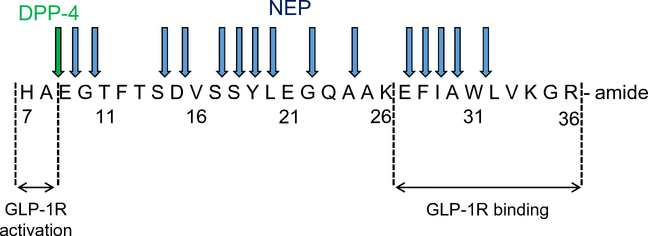Fig. 2.
Amino acid sequence of active GLP–1 showing multiple sites of cleavage by neprilysin (blue arrows) vs the only site of cleavage by DPP–4 (green arrow). C-terminal amino acid residues are important for GLP–1 receptor binding, whereas residues 7 and 8 are crucial for GLP–1 receptor activation. The cleavage of GLP–1 by DPP–4 renders the resultant GLP–1(9–36)amide non-insulinotropic, although GLP–1 receptor binding is still possible. GLP–1 cleavage by neprilysin prevents this binding. GLP–1R, glucagon-like peptide-1 receptor; NEP, neprilysin. This figure is available as part of a downloadable slideset

